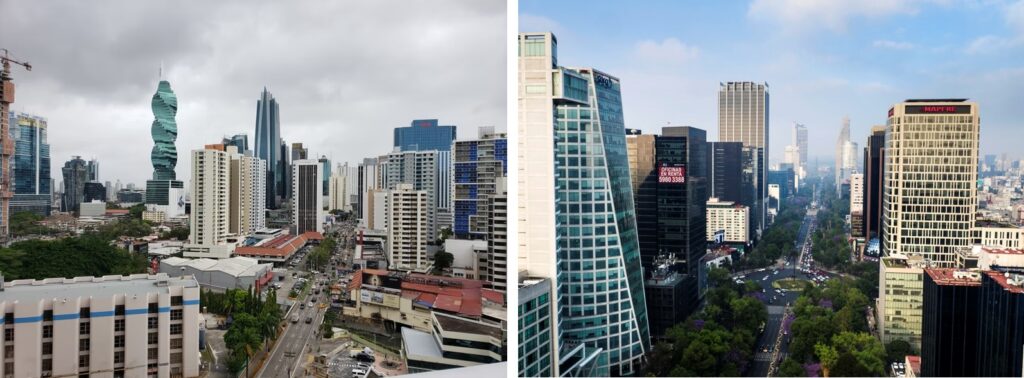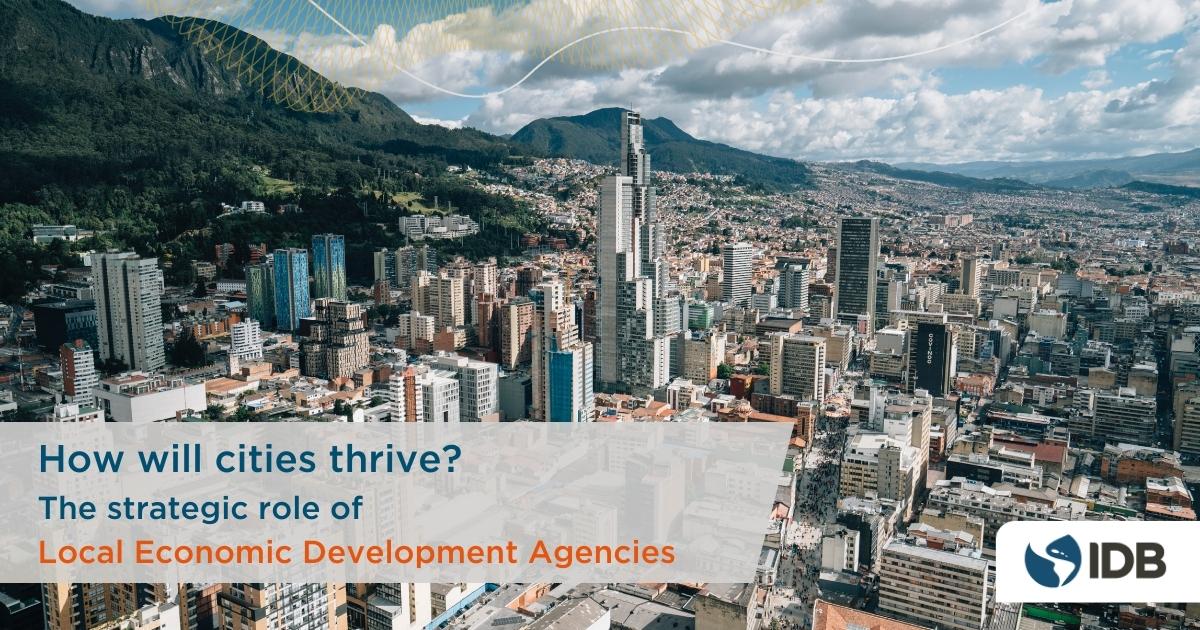Este artículo está también disponible en / This post is also available in: Spanish
Cities at the crossroads of economic growth
Cities are the economic engine of Latin America and the Caribbean (LAC), generating more than 75% of the regional GDP. Their prosperity and growth lead to that of the entire region. For this reason, the economic recovery of metropolitan areas after the COVID-19 pandemic must be rapid, long-lasting, socially inclusive, and environmentally sustainable.
The Inter-American Development Bank (IDB), through its Vision 2025: Reinvest in the Americas, intends to work on a solid economic recovery based on the rapid reactivation of the productive sector, the promotion of social progress, and the strengthening of good governance and institutions.
This vision coincides with the challenge facing our region’s cities to accelerate economic growth while leaving no one behind. Local economic development agencies (LEDA) play a crucial role in this process, offering creative solutions to complex problems. Join us in this blog entry to discover the importance of LEDAs in our region’s economic and social development.
Why are local economic development strategies necessary?
Local economic development cannot be considered a marginal urban and social policy. It must be approached as the main strategy for the sustainable territorial economic growth of cities. It arises as a response to situations of global and local economic crises, inconsistent policies from the central level and processes of institutional decentralization. These factors originate immediate demands from local communities and the greater responsibility of local governments in attracting investments, generating jobs, and improving the quality of life of communities.
Local economic development strategies are opening new doors for people’s growth and prosperity while improving national economic performance. Effective local economic development can generate jobs, reduce social inequality, and improve information flows for investors, leading to more private investment, higher productivity, and better competitiveness of cities.

Do we need local economic development agencies to accelerate growth?
The answer is yes. LEDAs are a creative solution to the complex challenges facing cities. They are structures that integrate economic development with urban regeneration.
The COVID-19 pandemic demonstrated the need to build new, better, and more agile institutions that respond to the demands and needs of health, climate, and economic emergencies. The value of combined work, coordination, and managerial capacity, along with rapid digitization, has been revealed as necessary characteristics of these new institutions. The LEDAs provide these characteristics for local economic development through a corporate governance structure that solidifies wills around economic and territorial strategies, calibrating the demands of the public and private sectors and providing a broader, long-term growth perspective.
The Corporate Governance of a LEDA, an essential requirement for its success
Transparent, efficient, and effective corporate governance is crucial for a successful LEDA. Corporate governance is related to aspects such as:
- institutional autonomy
- clear accountability lines
- well-defined specific responsibilities of the agency
- fiscal and financial relationship with the local government
- its articulation with the private sector
- its clear relationship with the needs of the city and its communities
The corporate structure can vary from city to city and must be the one that best adapts to the institutional framework and political context of the city, but it must have the following characteristics:
- a clear objective regarding the economic development of the city
- a clear autonomy for decision making
- the ability to project their work beyond electoral and municipal government cycles and to coordinate efficient arrangements between public and private entities
The structure of a LEDA varies according to the level of government that creates it (regional, provincial, state, metropolitan, municipal), its priority functions (investment, employment, urban development, business promotion) or its affiliation (public, private or mixed). In any case, the mentioned variables must be clearly defined for an effective LEDA. In other words, what is its territory of action? What is its function? And what is the capital equity structure? It is essential to define its precise level of corporate autonomy, legal independence, specific long-term vision/mission, and its independent sources of funding and income.
The success of a LEDA lies in its clear relationship with the city government, its specific responsibility, a highly qualified staff, a strong presence in the city, and a clear relationship with the local political environment. In conclusion, a successful LEDA exists when a set of functions are well coordinated within a clear corporate governance structure, rather than a single institution that covers and executes all the functions of the local economic development planning process. At the end of the day, the best corporate governance scheme for a LEDA must be the one that guarantees the highest level of autonomy, specific authority, and resources (human, financial) to cover at least the functions of research, generation of relevant information on the market investment promotion, and coordination with various partners to structure projects that contribute to the economic development of a city.

Three recommendations for successful corporate governance in a LEDA
Although each case is different, and cities must attend to their specificities, the following tips will make for successful corporate governance of your LEDA:
- Clarity of functions and corporate autonomy are necessary. This will allow clear governance rules for the efficient and effective operation of the LEDA.
- A LEDA must clearly establish its lines of responsibility and reporting concerning the city’s political and administrative government.
- The entity’s structure must be constituted under the vision of being able to interact with other levels of government, the business environment and civil society. It is also necessary to build consensus in identifying needs, creating viable businesses and projects to attract investment, create jobs and scale up the best possible urban regeneration.
Improving lives in the cities
The LEDAs are a solution highlighting cities’ leading role as engines of growth. The IDB’s mission is to improve lives. Therefore, we believe that the structuring of LEDAs can contribute to enhancing governments’ capacity to carry out better urban policies, to improve the lives of the inhabitants of our cities. The way to make it a reality is by giving citizens more significant opportunities for economic growth, employment opportunities, and better urban projects for climate resilience/adaptation and social inclusion.
In a future blog entry, we will address concrete examples of successful LEDAs, both from the region and globally. Do not miss it! If you enjoyed this blog, sign up here to receive our monthly newsletter with all the blogs, news, and events from the IDB’s Housing and Urban Development Division


Leave a Reply